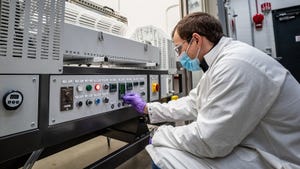Are Small Batteries Posing a New Health Risk?
A new report has found that “button” batteries are sending children to the ER at unprecedented rates.
September 14, 2022

Today, batteries are becoming increasingly ubiquitous in our daily lives, and with that comes a number of unintended consequences. Amongst these consequences has been an increased risk of injury and/or death to children as a result of ingesting these batteries.
Earlier this week, a new study published in the peer-review journal Pediatrics released new statistics regarding battery-related emergency department (ED) visits in children 18 years and younger. In this article, we’ll dissect the study’s findings and take a look at what we can learn from them.
New Report Findings
In a new study published in Pediatrics earlier this week, researchers revealed some telling new statistics regarding the potential health risk that batteries pose.
In the study, the researchers found that from 2010 to 2019 there were roughly 70,322 battery-related ED visits in the United States for children 18 and under. This number translates to an average of 7,032 ED visits per year, roughly 9.5 visits for every 100,000 children, and about one visit every 1.25 hours. Importantly, as compared to the results from a similar study of the previous decade, the new study shows that the current rate is more than double of the previous decade when one ED visit happened every 2.66 hours.
Looking deeper at the study, the researchers found that among these hospital visits, roughly 90% of them were due to ingestion. Even further, the most frequently ingested kinds of batteries were small coin-cell batteries, also referred to as button batteries, accounting for 84.5% of all reported cases. Naturally, younger children were more at risk, with 84.2% of cases coming from children 5 and under, with most cases coming from 1 and 2-year-olds respectively.
Causes and Prevention
One significant reason why the rate of battery-related injury has more than doubled in the past 10 years is simply that batteries are more ubiquitous today than ever before.
Looking at the most recent study compared to the one from a decade ago, an interesting finding was that button batteries accounted for a similar proportion of battery ingestions in both time frames. What this indicates is that the batteries themselves haven’t necessarily become more dangerous, instead, the increase in ingestion is more likely a result of an increase in battery accessibility.
From a design perspective, this challenge poses a number of tradeoffs for the engineer. A major design trend in electronics today is a move towards smaller, lower-power devices. The lower power the device, the smaller the battery can be and the lighter and cheaper the end product is. The design tradeoff is that, if this trend is to continue, safety precautions must also be taken to counteract the potential risk to children.
These precautions may entail some sort of regulation on child-facing or general household products that a child may have a chance to interact with. One solution can include child-proofing the area of a device where batteries are kept such that adults can replace batteries if needed. Still, children 5 and under (where most incidents occur) would be unlikely to access them.
Moving Forward
As technology and batteries become more widespread and central to our daily lives, we must also take a step back and think about the implications of this change. From a health and safety standpoint, it is clear that widespread adoption of batteries is also leading to an increase in health risks for children 18 and under.
Moving forward designers must be conscious of these impacts and design products in such a way as to ensure the safety of their users and children who may unintentionally interact with the product.
About the Author(s)
You May Also Like





